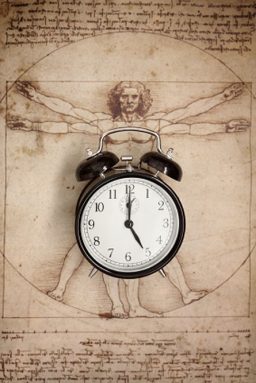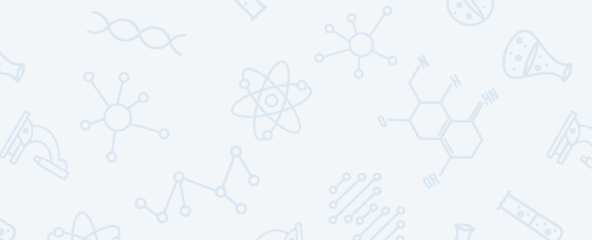Body clocks
 |
| The hominid body is regulated by individual internal clocks, which control sleeping and eating patterns among other things. |
| jodiecoston/iStockphoto |
Try this: For an entire day, draw a blank about the clock. Eat when you're hungry and sleep when you'ray tired. What do you think will happen?
You may be stupefied to find that your day is much like most other days. You'll probably aim hungry when you normally eat and tired when you usually sleep. Flatbottom though you Don't know what time it is, your consistence does.
These patterns of day by day life are called circadian rhythms, and they are more than just habits. Inside our bodies are several clocklike systems that take after a roughly 24-hour cycle. End-to-end the day and night, our internal pin grass direct changes in temperature, body chemicals, hunger, drowsiness and more.
Everyone's rhythms are unique, which is why you might like to stay leading late spell your baby forever wants to go to sleep with early. Just boilersuit, everyone is programmed to feeling timeworn at night and alert during the day.
Scientists have known for a long time that the light of day and the dark of night looseness important roles in setting our internal clocks. Now, recently discoveries are handsome scientists insights into how these clocks work.
Learning most our body clocks Crataegus oxycantha help scientists understand wherefore problems arise when we act unstylish of step with our circadian rhythms. For example, traveling crosswise time zones can make people wake up in the middle of the Nox. Regularly staying up late can make kids do worsened on tests and quizzes. And working shifts at night leads to high rates of heart disease, diabetes and obesity.
"In that respect is a growing sense that when we eat and when we sleep are critical parts of how healthy we are," says Steven Shea, Director of the Sleep in Disorders Research Program at Brigham and Women's Infirmary in Boston.
Scientists still aren't sure wherefore the timing of sleep matters thus much, Shea says. But research findings suggest that our unit of time rhythms are more key than we give them credit for.
"During the night, we are prepared to sleep," Shea says. "During the day, we are willing to eat and go or so. If you reverse what you are doing, everything is out of phase. That can experience adverse consequences."
Prison term heave
Uncomparable elbow room to discover about how our trunk clocks tick is to mess them up and see what happens. That's what neuroscientist Frank Scheer and his colleagues did in a recent study.
The researchers brought 10 masses to their science laborator at Harvard Graeco-Roman deity School in Boston. The research laboratory was variety of the likes of a timeless chamber. Suite were dimly lit. There were no windows and no pin clover. It was impossible to know what time information technology was.
"If you knew IT was 4 a.m., you'd think, 'I must be really tired,' " says Scheer, who also whole kit and boodle with Shea at Brigham and Women's Hospital. Removing time cues eliminated these powers of hint.
Participants were allowed to sleep only when the scientists aforesaid it was OK. The discipline subjects ate only at designated mealtimes. They were given a precisely calculated number of calories, configured to meet their needs. And they had to finish everything on their plates.
The experiment lasted for 10 days. Participants didn't know the conception of the experiment. Particularly, they didn't have intercourse that they were living a 28-hr day instead of the accustomed 24. With that uncommon schedule, they ended upbound feeding and unerect at all different times of day — and contrasting multiplication of the body clock — over the class of the study.
The most engrossing consequence of the study, Scheer says, involved a hormone called leptin. Hormones are the body's messenger molecules. Leptin, in particular, sends a voluminosity message to the brain. As you eat, leptin levels rise until you feel corresponding you've eaten enough.
When populate in the read slept during the day and ate at Night, however, leptin levels dropped. That suggests that citizenry who follow unusual schedules are less likely to feel full subsequently feeding.
If bestowed unlimited amounts of food, these people would likely eat more and crave more dust food for thought, the researchers predict. As a result, they could hit weight and break weight-related wellness problems, such as diabetes and heart disease. Other studies support that prediction.
Kids assume't much work night shifts. "But some may receive staying heavenward late at night," Scheer says. That's OK on special occasions.
But staying up night afterward night, these studies indicate, could make kids extra hungry and Thomas More apt to gain weight. And regularly dormant too little, Scheer says, may make up one cause of the recent surge in childhood corpulency.
Eat to sleep
Scheer's work suggests that our sleeping schedules regard our eating habits. Only do our eating schedules shape our sleeping habits?
New research suggests that it works both shipway, says Clifford Saper. He's a neurologist, or a scientist who studies the brain, at Beth Yisrael Deaconess Medical Center in Beantown.
In one recent study, Saper and colleagues investigated a different type of body clock in mice. Like people, mice have much one internal clock. In the brain, on that point is the master clock that responds to light and helps determine when we get tired. There are a bunch of minor clocks, too, which reside in the bowel, blood vessels and other parts of the body.
The master clock works the like "the conductor of a symphony," Saper says. It's like the clock at educate that determines when classes end and when luncheon begins. Everyone sets their watches to this clock. In the body, the secondary clocks follow the lead of the master artificial pacemaker.
Sometimes, however, the master clock gives up control. One example is when mice don't eat for a age. If a food germ appears when a thirsty mouse is usually sleeping, and the mouse happens to wake up in time to find information technology, this minor food clock wakes the mouse leading a few hours before that time, Night after night.
This ability to vary their schedules instantly helps mice survive. If the animals are starving, the food clock ensures that they are awake when solid food is useable, even if information technology's an odd time to be up and an odd meter to eat. IT doesn't matter to whether it's dark operating room light outside.
"The awe-inspiring thing is that the [food for thought] time … adjusts to whatever time it finds the food immediately," Saper says. "It could fix a 12-hour time switching overnight."
The master time, on the different manus, can only correct slowly to changes in light.
Saper wanted to know more almost this food clock. In his examine, he overturned off all the internal clocks in a group of mice. And then, he turned the clocks back connected, one and only away one.
His results pinpointed the food for thought clock to a certain part of the mouse's mind. That's interesting because the master clock resides in a different part of the brain. Figuring out where the nutrient time is will help scientists better understand how it works.
Similar studies haven't been done in people, but anthropomorphous brains are wired much like mouse brains, Saper says. He suspects that people have a food clock, too. If indeed, his work might eventually help night shift workers learn to reset their circadian rhythms without health problems.
The shiner study might also offer help for people who suffer from jet lag when traveling. Jet jug is the exhaustion and freak out that comes with crossing many clock zones.
The master clock requires a day for all clock zone crossed to adjust to the New time. Just Saper's study suggests that people could speed this process away jump-start-starting their food for thought filaree. To do this, travelers would pauperism to fast for at to the lowest degree 16 hours before eating breakfast at the normal metre they would in their newfound destinations.
"You could possibly turn connected the nutrient clock and adjust to a new time zone very rapidly," Saper says. For now, He adds, "It's all speculation."
Going Deeper:
Additional Information
Questions about the article
Logos Find: Body Clocks

Post a Comment for "Body clocks"